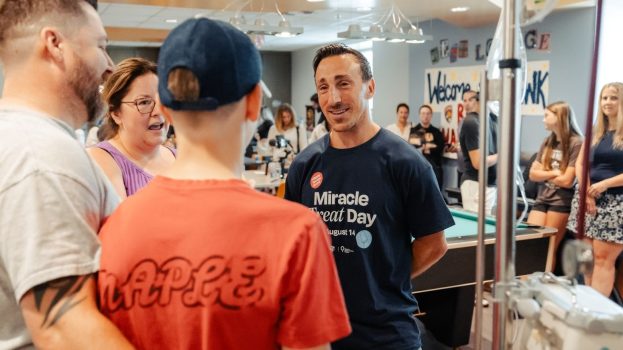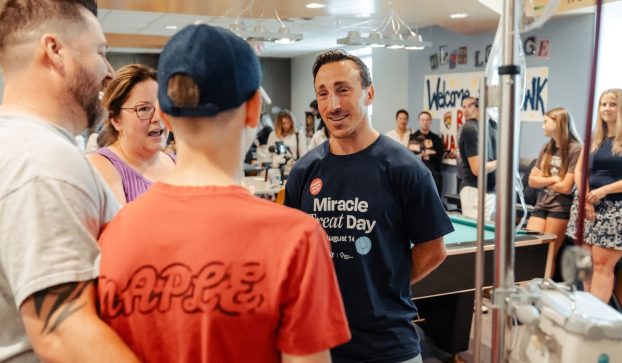Fragmented audience attention has made brands’ lives much more complicated. They have to think about things like content identification, development and management, which have become increasingly frequent client asks – a large consequence of convergence. And media agencies are leading the charge, helping brands navigate the new mediascape. They are in the best position to be taking the lead, says Sunni Boot, president and CEO, ZenithOptimedia Canada. They have the contacts, they know where to go and they understand the competitive pricing landscape.
“Today, we as media companies are being asked to manage the process from end to end – from owned to paid to earned,” says Boot. “I feel media companies are the best for that because paid is the catalyst, the leverage between the client’s own properties and the earned he or she is looking to create. Creative is still going to have the onus in terms of managing the brand, but we’re saying, ‘how can we take that brand and use it with media content to develop deeper conversation.’”
Zenith, like other agencies, has had to reorganize itself to better take on that leadership role. That includes bolstering its content capabilities and working with producers and writers to develop content for games, contests and owned and paid media through partnerships with large media vendors like Shaw or Bell. All of which is preparing the agency for the imminent Canadian introduction of Newcast, a ZenithOptimedia division that’s existed globally for about a decade.
“They are a division that can work with producers, advertisers, networks, publications and websites to create and manage content,” says Boot. “We haven’t officially launched it, but this is where we’re heading. We’re hiring and/or repurposing our existing staff to identify, develop and manage advertiser and vendor content.” Boot projects Newcast will officially come to Canada in 2012.
Meanwhile, UM Canada has been implementing a whole new operating system, both locally and globally. Called UM 3.0, it’s a retooling to focus on enhancing connectivity across three core competencies, one of them being content. UM’s “custom group” develops unique content solutions for clients, creating platforms for consumer and brand experiences by identifying new ways of connecting to the audience to drive business impact.
It’s an area that Peter Mears, president, UM Canada, says has come to the forefront in many of UM’s interactions with clients. Although not a product of UM 3.0, Coca-Cola Covers, a cross-platform music-based program that UM developed with MuchMusic to target teens, is an example of where the media agency would like to go with the custom work it produces.
“That’s very much the model as we see it moving forward, where we’re creating custom content with a media (supplier) partner, which activates a consumer insight and delivers against a consumer need,” says Mears. “The changing world in which we find ourselves allows us to do more of that, as there are more platforms out there where we can create content with a partner.”
Increasing investment in proprietary tools has gone hand in hand with media agencies’ efforts to bolster content capabilities as we enter a more complex yet accountable media environment.
ZenithOptimedia, as a global network, invests 11% of its revenue in development of proprietary tools, systems and software so it can respond to the speed of the marketplace. Insight and analytics is also the second competency covered under UM 3.0, as the agency seeks alignment with its clients on research, measurement and analytical priorities and to link key metrics to business outcomes. It’s essentially proving what is working and predicting what will work.
“Rather than just stopping at how we define audiences and how we measure them, which is where our arena has been historically, we’re really thinking about how we close the loop on those audiences and truly understand how connections (communications planning) and touchpoints intersect,” says Mears.
Aegis Media has been placing a similar emphasis on understanding audiences, having launched its Consumer Connection Study [CCS] in Canada last year. It includes over 230 attitudinal and behavioural statements pertaining to psychographic segmentation. Over 70 bought, owned and earned media touchpoints were investigated in terms of how, when and why people use them, and their ability to drive anything from noticeability to engagement or purchase.
“We really want to take ownership of consumer insight in the marketplace,” says Annette Warring, COO, Aegis Media Canada. “That’s why we’ve invested hundreds of thousands of dollars in our proprietary study, but more importantly it’s having that ability to take that insight and activate it across all touchpoints seamlessly. [CCS] allows us to really dig deep in understanding path to purchase.”
Convergence has also had large structural implications for media agencies. Hiring to deepen the talent pool has become a priority for media agencies, but that’s half the battle. Finding ways for everyone to work together is the key. This includes everything from overhauling staffing practices to office layouts, seating groups together to create an “all-in-one” client approach.
“You absolutely have to have digital, content and implementation specialists,” says Boot. “Each of these groups has to be best in class, but [they have to] be better together and for that you need generalists, and that’s how we’re structured.”
It’s the same case at UM, which is hiring talent with client and media vendor backgrounds, says Mears.
Some shops are creating positions at senior levels to provide overarching strategic leadership to help navigate the new mediascape. Others are creating specialist positions at the management level to tap into emerging media platforms. Mindshare North America, for example, recently named eight-year media agency veteran Geoffrey Greenblatt, who has extensive experience in digital game development and strategy, as its director of gaming, a newly created position. Warring says that at Aegis, the senior level is all about strategy, while the more junior level is focused on specialists.
“We’re going to have specialists when it comes to the execution of gaming and mobile and things that are very tactical and specialized, but not at the director level,” says Warring. “We’re really focusing on…getting people that can think across all media. It’s building more business-thinking, client-oriented communications planning groups…with the ability to reach out and pull in specialists as needed. It’s not just looking at channel behaviour and results individually, but looking at how those things, in a convergent world, interact with each other and what that means for a brand.”
Warring was recently named COO, a new position to focus on helping build client relationships. As part of her mandate, she works closely with Sasha Grujicic, who was recently named Aegis Canada’s SVP, group strategy, tasked with stimulating groundbreaking and disruptive thinking in the company. Grujicic’s position, also newly created, is one that Warring says is unique in the Canadian market. This management-level restructuring saw Aegis also name Caroline Gianias as EVP, trading and communication activation; Jennifer Clark as VP, consumer insight; and former MTV co-head of integrated marketing Angela Courtin as head of content for North America.
“It’s a growing focus and [Courtin] sits at a very senior level within the organization,” says Warring. “Her role is working with people like Sasha and our integrated business leaders in bringing more content solutions to our clients.”
Other agencies are following the same playbook. MediaCom, for example, recently brought on Matt Di Paola as its chief strategy and innovation officer, another newly created position. He is overseeing strategy and digital leadership, insight and research, business science and content development and analytics.
The core backbone of the media agency is also evolving. The third competency of UM’s 3.0 operating platform involves closely aligning its buying and planning groups. The agency’s portfolio management group, which includes integrated planning, holistic investment and the foundation of advertising operations (processes and systems that support the sale and delivery of online advertising) is becoming a very important area given the number of digital options that are available today, says Mears.
“As we move into the digital world and see planning and buying becoming more closely linked, it makes sense, we think, to move planners and buyers to be more closely aligned and think about those teams as a portfolio management team,” he says.
It’s about eliminating silos and it’s a practice that Aegis has been engaged in for the last two years, says Warring, literally eliminating offices. Client teams sit together regardless of their discipline in open concept arrangements. Aegis agency Carat also recently underwent a similar 360-degree change, says Carat VP/managing director Alastair Taylor.
Standalone media agency brands are not the only ones rethinking their approach to create a stronger competitive position as a convergence partner. Not too long ago Cossette went through a $12 million agency overhaul with “de-siloing” in mind, consolidating P&Ls to create a core team on each account with a strategic, creative service and tech lead. It divided its agency assets into two entities, Cossette and Esprit de Corps Communications (EDC), with Cossette Media and Cossette closely aligned (providing clients an integrated service offering), and it created Jungle Media, working with its international growth arm EDC. As a result, the company retired several agency brands (including Fjord and Blitz). All aligned groups sit in close proximity enabling different disciplines to work together. The ultimate goal was to create a simplified, more integrated operating structure.
“It was a very conscious decision driven by both short-term needs and long-term, or medium-term vision,” says Brett Marchand, president and CEO, Cossette. “From a short-term standpoint we just couldn’t imagine not keeping the closeness of Cossette Media and Cosette on clients like BMO and Future Shop. There’s a real benefit to us in terms of innovation.”
And as media agency brands like Zenith, UM and Aegis position themselves to take on a bigger role in the content corner of the convergent world, agencies outside the media realm are also activating similar remodelling plans, focusing on content to take a bigger slice of convergent pie.
Take Toronto-based Capital C, which last year opened up its own content group, hiring former Marketing magazine editor-in-chief Christopher Loudon to manage it.
Like media agencies, it’s also taken steps to improve its digital capabilities with Mission Control and Fresh Intelligence – the former a desktop tool that tracks traffic and sentiment on the web, the latter an online research company Cap C took controlling interest in about 18 months ago. Both have enabled the company to hasten its clients’ decision-making processes in a media convergent world where every dollar and how it’s spent counts, says Tony Chapman, CEO, Capital C. That’s particularly useful when cross-platform content production is becoming the status quo.
“Our clients have an insatiable appetite for [those services] because they allow them to be a lot more precise with media, messaging and sequence,” says Chapman.
Regardless of where the content comes from, Boot says media agencies’ ability to manage portfolios from end to end makes them best suited to lead. “By taking the lead it doesn’t take away from creative agencies or promotion agencies at all,” says Boot. “But we’re in such a strong position to be the catalyst between owned and earned, between content developers and providers and distributors.”
Marchand says that Cossette’s restructuring goals for the long-term had very much to do with another consequence of convergence, microtargeting resulting from techs like IPTV, which are looming on the horizon. That’s not to say that Cossette isn’t working with clients on the media front to investigate content creation deals, says Marchand. He just sees microtargeting as the way of the future.
“It has massive implications,” he says. “Not just that there’s going to be real-time bidding and targeted TV, but a corner dry cleaner will be able to advertise because you’re going to be able to send [advertising] via an IP address.”
That means dry cleaners in downtown Toronto can talk to people who buy dress shirts in a two-mile radius around their store, bringing the kind of micro-advertising seen online to TV. To prepare for this, Cossette invested in the creation of a new ad server called Ad Gear, which launched in June of last year. “It’s going to allow us to [reach] the next level of analytics, but also to serve rich media on your TV,” says Marchand.
Cossette has also been bringing in talent from a variety of backgrounds, digital in particular, to support its plans for the future, as have most agencies lately – generalist and specialist
shops alike.
“We’ve been investing more and more in hiring on the digital and analytics side, both in media and outside media,” says Marchand. “Forty-two percent of our employees now have a specific digital responsibility or job title. Media people are great at knowing how to target and what to pay for it, but there aren’t a lot of digital gurus in the world. You have to solve it with a combination of talent.”
Given the operation and structural changes that agencies are making, a big question is how compensation models will change to reflect the agency dynamic. For now anyway, the bulk of media business, notes Mears, is still being transacted in a traditional way.
“If you look at the way our business is structured currently, we are still, for the most part, trading in CPMs, reach and frequencies, and that could arguably be called old money,” says Mears. “As we look forward, where UM wants to go is being compensated for business outcomes. That requires investment from our point of view, and from a client’s point of view because we need to be able to accurately measure the impact we’re having on a client’s business.
“Being paid less against how much money we spend and more [against] the money we generate is a good aspiration for us as an industry.”
Taking the content lead: Mighty morphin’ media agencies
























